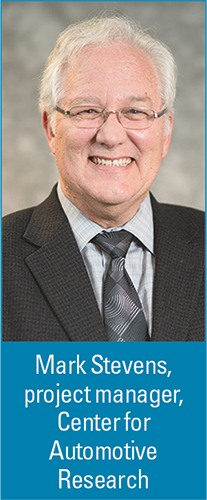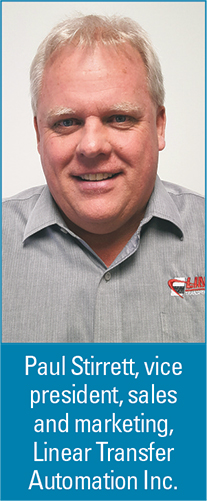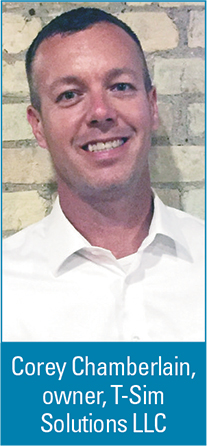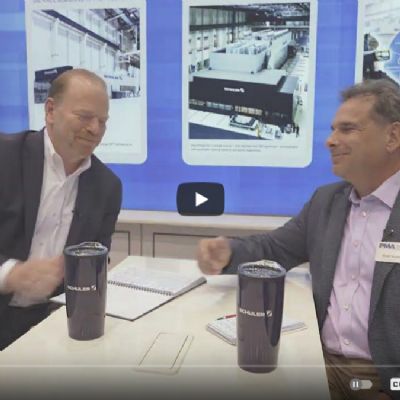 Brad Kuvin
Brad KuvinEngineering the Press Stroke Using Servo Technology
August 22, 2018Comments
September 25-26 in Grand Rapids, MI, we’ll hold our seventh annual Servo Technology Experience for metalformers, promising a plethora of useful technology tidbits stampers can take back to their shops, and immediately apply. When we launched the conference in 2012, the focus was directly on servo-press technology. Now we’ve turned our sights to creating an advanced servo-technology conference, Servo 2.0 if you will.
Presentations planned for Grand Rapids include experts from the automotive industry sharing their perspectives on the role servo-based equipment plays in stamping high-strength steels and aluminum alloys. And, we’ve lined up a full slate of experts covering, in great depth, how servo-based equipment brings speed and precision to the pressroom like never before.
Speed and Precision
 Servo presses move fast, forming the centerpiece of servo-technology-saturated pressrooms operating at an ever-quickening pace—a money-making pulse. Servo presses, along with their state-of-the-art support equipment, often run at two to three times the speed of conventional mechanical presses.
Servo presses move fast, forming the centerpiece of servo-technology-saturated pressrooms operating at an ever-quickening pace—a money-making pulse. Servo presses, along with their state-of-the-art support equipment, often run at two to three times the speed of conventional mechanical presses.
The challenge, then, as described by several of the speakers planned for the Servo Technology Experience, is ensuring that all of the press-line equipment work precisely in concert with speedy servo presses. This year’s keynote speaker Mark Stevens, a former GM executive and now a project manager with the Center for Automotive Research, describes the advantages of servo presses this way:
“When servo-mechanical presses splashed the industry 15 to 20 years ago, we quickly understood how the ability to engineer the press stroke would allow us to reduce initial shock, saving the press and the tooling and significantly extending the maintenance cycle. Servo technology also allowed us to minimize or even eliminate the impact of springback and twist on part dimensions when working with higher-strength materials. Then, as we took on even higher-strength materials, where you need to add heat and pressure to the workpiece during a dwell at bottom-dead-center, servo becomes a significant enabling technology.
“The ongoing transition to structural-aluminum parts in automobiles,” Stevens continues, “makes servo-press technology even more critical. I know of (and will describe during the conference) one company installing five servo-press lines to stamp high-strength aluminum frame components.”
Engineering the Entire Process
 While Stevens speaks of “engineering the press stroke,” servo-based technology allows metalformers to engineer the entire press-line operation. So notes experts from transfer-system supplier Linear Transfer and simulation-software provider T-Sim, both of whom will speak at this year’s conference.
While Stevens speaks of “engineering the press stroke,” servo-based technology allows metalformers to engineer the entire press-line operation. So notes experts from transfer-system supplier Linear Transfer and simulation-software provider T-Sim, both of whom will speak at this year’s conference.
“The pendulum-motion profile employed by most, if not all, users of servo presses offers great improvements in speed and cycle time,” says Paul Stirrett, vice president of sales at Linear Transfer, “but it gives the transfer system very little time to make its moves. That’s why equipment providers up and down the press line have been focused on moving more quickly, and with more precision. To help drive home this point, I’ll show a video during the conference of an installation we recently completed where we’re working with a pendulum-motion press application at very high speed.”
Speed from servo presses has escalated so much, Stirrett adds, that he’s noting a trend toward using linear motors in some very specialized applications.
“We are starting to see applications where press speed requires linear-motor transfers,” he says. “These higher-torque and higher-speed setups, while more expensive than servo-based machines, can prevent the material-handling function from becoming a bottleneck. These systems can pull up to 10 Gs and still precisely control part location.”
During his talk, Stirrett will describe one such system—a solar-panel production line capable of running at 120 strokes/min. Also on Stirrett’s agenda: Depiction of the latest/greatest in end-of-arm transfer tooling, and new tools designed to facilitate quick changeovers.






 While new technology often can pay for itself in a reasonable amount of time, some metalformers strive “to make more with what they currently have,” notes Corey Chamberlain, owner of T-Sim Solutions, a developer of transfer-system simulation software.
While new technology often can pay for itself in a reasonable amount of time, some metalformers strive “to make more with what they currently have,” notes Corey Chamberlain, owner of T-Sim Solutions, a developer of transfer-system simulation software. 
 Video
Video Event
Event